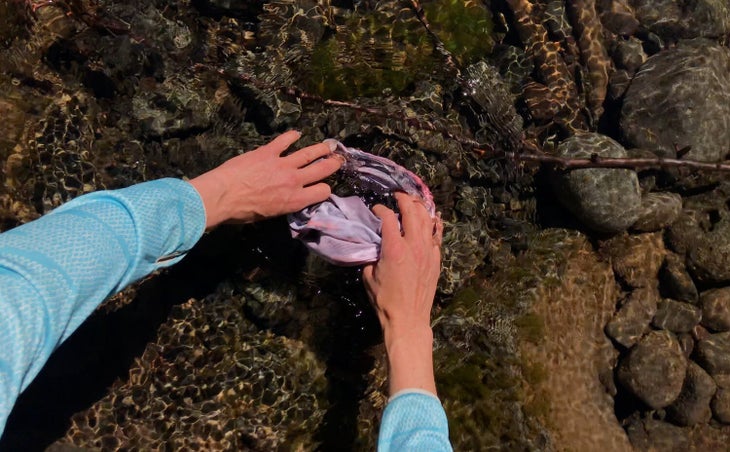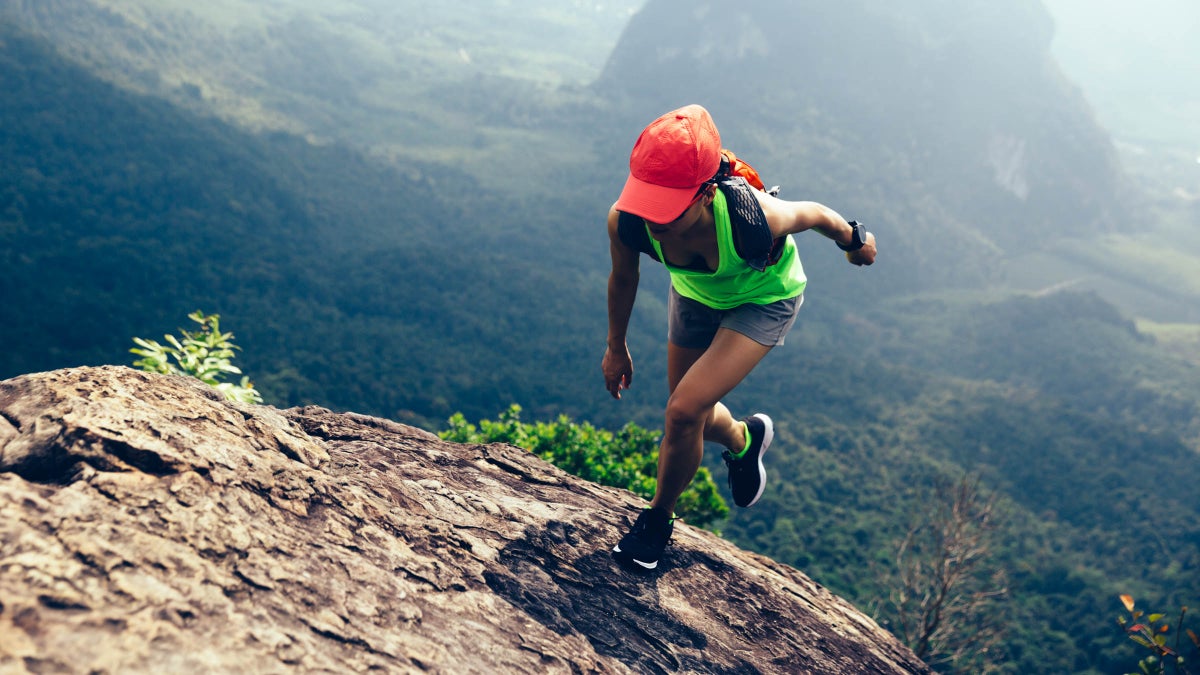Products You May Like
Get access to everything we publish when you
sign up for Outside+.
Scorching hot summer days (heat waves included) can make motivation to run a challenge. It can be tempting to skip heading out altogether, especially if you don’t rise early and run before the heat of the day sets in. And while heat exhaustion and other heat-related illnesses can be very serious, there are ways to run smart as the mercury climbs.
What Trail Runners Should Know About Running in Hot Conditions
Trail runners have an advantage, as natural features that come with off-road terrain—trees, creeks, altitude—can make hitting the trails more bearable in hot climes than running on asphalt. Here are some heat wave running tips and strategies—mental tricks included—for keeping your cool.
1. Run early.
Early summer sunrises can make it difficult for runners who aren’t morning people to lace up before temperatures rise, but the lower temperatures can make all the difference. Here’s a mental hack: Visualize your favorite trail, and/or plan to run a trail you love, and/or plan to reach a spot on a trail to view the sun rising. Waking up early becomes more bearable with the excitement of anticipation.
2. Run late.
The day’s second wave of cooler air comes after the sun dips low in the sky. Running at dusk can be a great way to unwind. For those who find it challenging to motivate late in the day, try these strategies: picture hitting your stride in the cool evening air, undoing any unwanted stress that may have built up during the day. Also, a mid-afternoon dose of caffeine can help. Just be sure to not ingest too much that you can’t fall asleep at night.
3. Cover up.
Especially during peak heat hours, wearing a brimmed cap keeps the scorching sun off your face, which can make your overall experience outside more pleasant. Likewise, wearing protective sunglasses that reduce the sun’s glare reduces eye fatigue, which can also affect your enjoyment level and keep you feeling fresher.
RELATED: Ready to Tackle the Trails? Start Here
4. Choose shaded trails.
If you regularly run trails in your area, you know that some are more tree-covered than others. Avoid the exposed trails midday. Instead, opt for the most shaded trails possible. When searching for new, optimally shaded trails, look for dark green areas on maps, and read trail descriptions on websites or apps.
5. Run near water.
Running alongside creeks can bring the air temperature down a couple degrees. Running on trails that cross over creeks can give you opportunities to splash cold water on your face and neck and dunk your hat or headband in the water. Choosing trails that run to or pass by lakes give you the same option, and those allow you to also dunk your whole body for a cooling mid-run dip. If you live near a coastline, running on the beach or near the shore can offer similar benefits, with the added bonus of the cooling breeze that comes off oceans and large lakes.

6. Dunk a hat/headband.
If you are running near water, take the opportunity to dunk your hat, headband, or neck gaiter (see No. 7) into creeks or lakes along your route. If your trails don’t pass by water sources, try wetting your hat/headband/gaiter before you head out. And if you’re carrying water, which you should be in the heat of summer, carry enough to wet your hat/headband/gaiter or even clothing mid-run. Doing so can lower your body temperature.
7. Buy and utilize cooling gear.
Cooling products like Mission’s Cooling Neck Gaiter (which can also be worn as a headband, sun guard, etc.) and getting it wet, wringing it out, and snapping it before wearing can do wonders to keep your body temperature down. The proprietary technology speeds up the evaporation process to create a noticeable cooling effect without the use of chemicals. You can also find gear, like hats, that have specific pockets to hold ice or ice packs.
RELATED: The 25 Best Rail Trails in the U.S.
8. Run high.
The higher the elevation, the cooler the temperatures, so heading high during summer months can offer welcome relief. Read our guide on how to have a successful run in the mountains.
9. Pre-hydrate and hydrate.
Pre-loading your hydration by drinking water or electrolyte drinks before your run can help abate fatigue caused by dehydration during your run. (In fact, it’s a good idea to stay well hydrated on a daily basis all summer, no matter your activity levels.) Carrying water and electrolyte drinks during your run, and drinking early and often, will both help you keep cool on the run and abate a mid-run bonk.
10. Embrace the heat (while outsmarting it).
Know that running in heat, just like running in other tough conditions like cold, wet, or even darkness, makes you tough. Whether you’re aiming for a goal race, training for an FKT or new distance, or could just use some good old mental toughness in your everyday life, use running in the heat to build you up.
RELATED: Is it Heaven or Las Vegas? An Inside Look at the Speed Project
